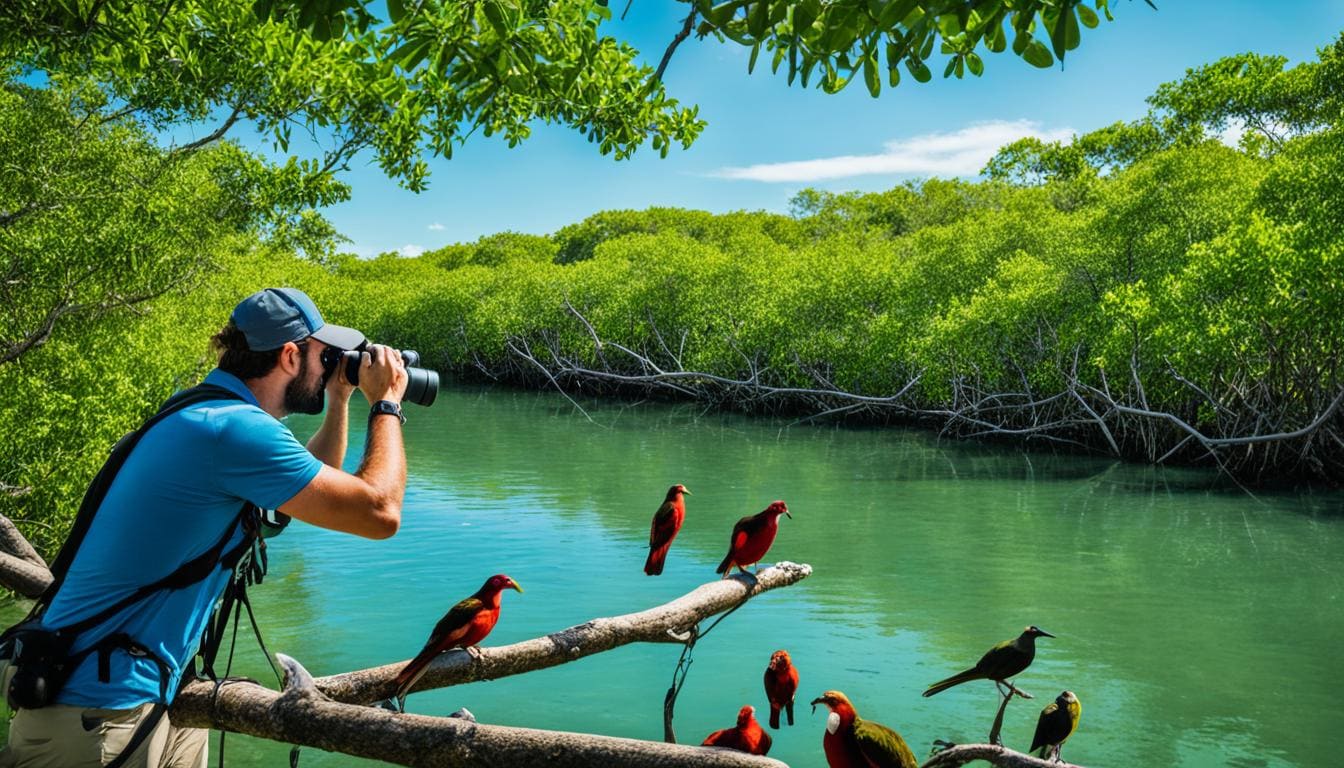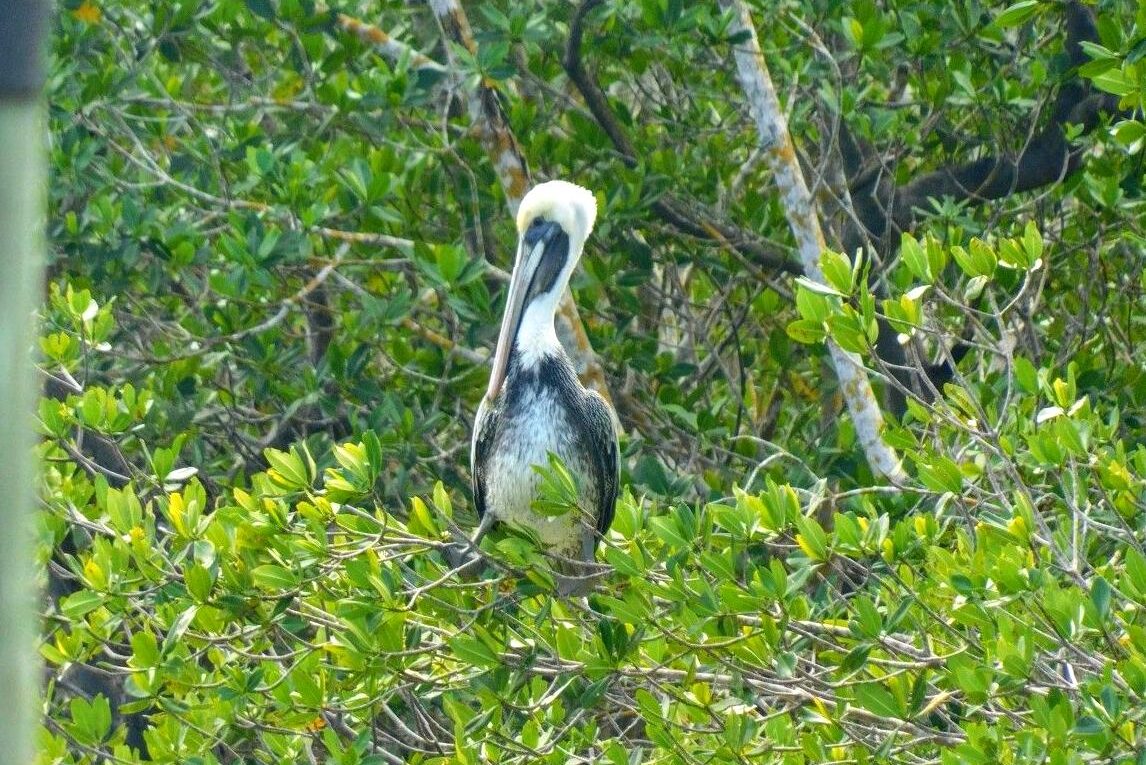Go Bird Watching in Mangrove Bay: Observe birds in the rich ecosystem of Mangrove Bay.
If you’re seeking a unique bird watching experience that intertwines with nature’s tranquility, look no further than Mangrove Bay. This rich ecosystem is home to a plethora of avian species, making it an ideal destination for bird lovers and nature enthusiasts alike. By immersing yourself in the vibrant surroundings of Mangrove Bay, you can observe the incredible diversity of birdlife that thrives in this coastal haven.

The Importance of Mangrove Ecosystems
Mangrove ecosystems are not only vital for the health of coastal areas but also serve as critical habitats for various species of birds. The dense mangrove forests provide shelter, nesting sites, and abundant food sources for countless avian populations. This complex environment plays a key role in maintaining biodiversity, helping to protect against coastal erosion and acting as a natural filtration system for waters. As you explore Mangrove Bay, you’ll discover how these ecosystems support not only birds but also countless other wildlife, making them a true treasure of natural beauty.
In Mangrove Bay, you might encounter species such as herons, egrets, and even colorful kingfishers, all of which thrive in the sheltered environment. Birdwatching in this area can truly transform perspectives, as it allows one to appreciate the symbiotic relationship between flora and fauna—a reminder of nature’s interconnectedness. Therefore, taking part in bird watching not only benefits personal enjoyment but also contributes to the understanding and appreciation of environmental conservation efforts.
Best Times to Visit Mangrove Bay for Bird Watching

Timing is crucial for a successful bird watching adventure in Mangrove Bay. Early mornings and late afternoons are recognized as the best times to observe birds in their natural habitats. During these hours, birds are typically most active, feeding and engaging in courtship behaviors. As the sun rises or sets, you’ll also benefit from softer lighting conditions, which make for better visibility and photographic opportunities.
Moreover, seasonal migrations can profoundly affect the variety of birds you might encounter. Spring and autumn are particularly fruitful times for spotting migratory species, as many birds are passing through on their journey. During these seasons, be sure to keep your binoculars handy, as you may catch a glimpse of rare visitors. By planning your trip according to these timeframes, you’ll increase your chances of observing an array of majestic species.
What to Bring for an Enjoyable Bird Watching Experience

Preparation is key for a fulfilling bird watching experience in Mangrove Bay. Here’s a checklist of essentials to consider bringing along on your trip:
- Binoculars: A good pair of binoculars is indispensable for getting an up-close view of distant birds.
- Field Guides: Bring along a field guide or a birdwatching app to help identify various species.
- Notebook and Pen: Document your observations and thoughts for future reference.
- Camera: Capture the beauty of your surroundings and the birds you encounter.
- Water and Snacks: Stay hydrated and keep your energy up as you explore the area.
By coming prepared, you’ll be setting yourself up for a rewarding experience, allowing you to fully immerse yourself in the beauty of Mangrove Bay’s birdlife. As you walk through the mangroves, take the time to listen to the sounds around you. Often, the songs of different birds can lead you to new discoveries and enrich your journey into the heart of this unique ecosystem.
Respecting Wildlife and the Ecosystem

One of the most important aspects of bird watching is ensuring that your presence does not disrupt the natural habitat or the wildlife. Respecting the ecosystem means adhering to guidelines that prioritize the well-being of the birds and their environment. This includes keeping a safe distance from nesting sites and avoiding loud noises that may startle the birds.
Additionally, it’s essential to stay on marked trails to prevent damage to delicate vegetation and ensure the protection of various species. Bringing along trash bags to clean up after yourself and others will contribute positively to the conservation of the area. Remember, responsible birdwatching not only enriches your experience but also helps preserve these natural wonders for future generations to explore and enjoy.
Conclusion
Mangrove Bay offers an unparalleled bird watching experience, revealing the intricacies of a thriving ecosystem teeming with life. By understanding the importance of these coastal habitats, choosing the right times to visit, preparing appropriately, and respecting the environment, you can create lasting memories while supporting conservation efforts. Whether you’re a seasoned bird watcher or a curious newcomer, Mangrove Bay promises an adventure filled with discovery and wonder.
FAQ
1. What types of birds can I expect to see in Mangrove Bay?
You can expect to see a variety of species including herons, egrets, kingfishers, and many migratory birds depending on the season.
2. Is there a specific season that is better for bird watching in Mangrove Bay?
Spring and autumn are the best seasons for bird watching, as they coincide with migratory patterns, increasing the chance of spotting rare visitors.
3. Do I need any special equipment for bird watching?
A good pair of binoculars and a field guide app or book are recommended. Additionally, don’t forget snacks, water, and a notebook for capturing your observations.
4. Can I bring children along for bird watching in Mangrove Bay?
Absolutely! Bird watching can be a fantastic educational experience for children. Just ensure they understand the importance of respect for wildlife and the environment.
5. Are there guided bird watching tours in Mangrove Bay?
Yes, many local organizations offer guided bird watching tours which can enhance your experience with expert knowledge and tips on spotting different species.
